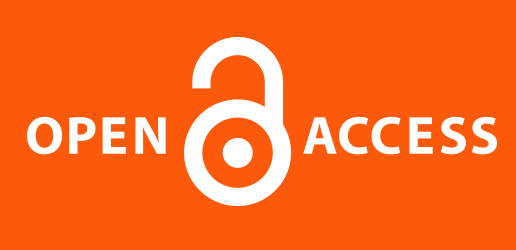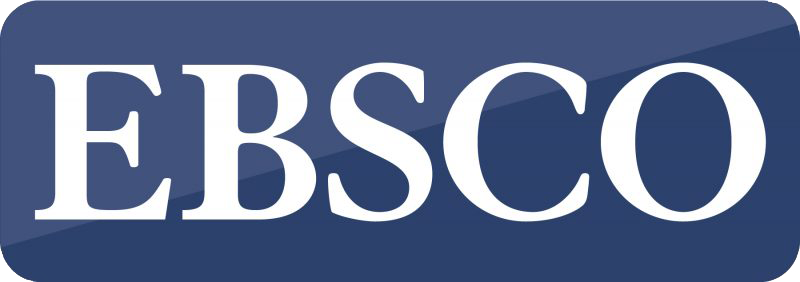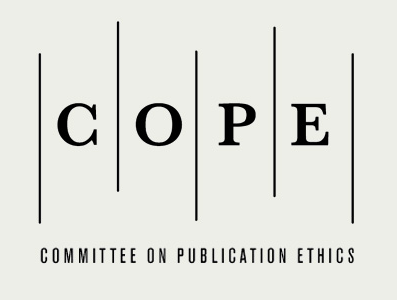Аlgorithmic and Conceptual Approach to Figure Surface Measurement
Маријана Ж. Зељић, Универзитет у Београду, Учитељски факултет, имејл: marijana.zeljic@uf.bg.ac.rs
Милица Р. Иванчевић, ОШ ,,Кнез Сима Марковић”, Београд
Иновације у настави, XXXII, 2019/1, стр. 64–74
| PDF | | Extended summary PDF |
doi:10.5937/inovacije1901064Z
Резиме: Мерење површине представља важну тему школских програма и тесно је повезана са другим математичким темама и са реалним окружењем. Резултати бројних међународних студија показују да су постигнућа ученика у домену мерења површине ниска, што се повезује са алгоритамским приступом наведеној теми, а који карактерише доминантно наглашавање процедуралних вештина и примена формула. У раду су разматрани различити нивои и параметри концептуалног разумевања мерења површине. Циљ истраживања јесте испитивање нивоа и карактера знања о мерењу површине код ученика четвртог разреда основне школе. У истраживању су коришћене дескриптивна метода и техника тестирања. Тест чине стандардизовани задаци (Huang & Witz, 2013) и још два задатка која нису део стандардизованог теста и која су осмишљена на основу транскрипта интервјуа из наведеног истраживања. Узорак je пригодан и чине га два одељења четвртог разреда једне основне школе у Београду. Основни закључак јесте да су ученици развили инструментално разумевање поступка мерења површине и да стратегије одређивања површине фигура своде на примену формула, због чега често греше, бирајући погрешну формулу. Као импликацију истраживања видимо истицање потребе да се довољно времена посвети активностима концептуалног приступа подели фигура и поплочавању које ће премостити велики јаз од поплочавања површи и бројања јединица мере до разумевања формула за рачунање.
Кључне речи: мерење, површина фигуре, алгоритамски и концептуални приступ.
Summary: Surface measurement is an important topic of the school curricula which is closely related to other mathematical topics and to the real world. The results of numerous international studies show that students’ achievements in the area of surface measurement are low, which is explained by the algorithmic approach to the topic characterised by the emphasis on procedural skills and the application of formulas. The paper looks at different levels and parameters of the conceptual understanding of surface measurement.. The aim of the research is to examine the level and quality of knowledge about surface measurements among pupils of the fourth grade of primary school. The descriptive method and testing technique were used in the research. The test consists of standardised tasks (Huang & Witz, 2013) and two more tasks that are not part of the standardised test and that were designed based on the transcript of the interviews from the above study. The convenience sample consisted of two classes of the fourth-grade pupils of a primary school in Belgrade. The key conclusion is that students have developed an instrumental understanding of the surface measurement procedure and that the strategies for determining the surface of the figures reduce the application of the formula, which is why they choose, often mistakenly, the wrong formula. Based on the research findings, we conclude that more time should be devoted to activities involving the conceptual approach to the division of figures and tiling. These activities will bridge the great gap between surface tiling and counting the units of measure and the understanding of calculation formulas.
Keywords: measurement, surface area, algorithmic and conceptual approach.
Литература
- Battista, M. T. & Clements, D. H. (1996). Students’ understanding of three-dimensional rectangular arrays of cubes. Journal for Research in Mathematics Education. 27 (3), 258–292.
- Battista, M., Clements, D., Arnoff, J., Battista, K. & Van Auken, C. B. (1998). Students’ spatial structuring of 2D arrays of squares. Journal for Research in Mathematics Education. 29 (5), 503–532.
- Battista, M. (2004). Applying cognition-based assessment to elementary school students’ development of understanding of area & volume measurement. Mathematical Thinking & Learning. 6 (2), 185–204.
- Battista, M. (2007). The development of geometric and spatial thinking. In: Lester, F. (ed.). Second handbook of research on mathematics teaching & learning (843–908). Reston: National Council of Teachers of Mathematics.
- Clements, D. & Stephan, M. (2004). Measurement in pre-K to grade 2 mathematics. In: Clements, D. & Sarama, J. (Eds.). Engaging young children in mathematics: standards for early childhood mathematics education (299–320). Mahwah: Lawrence Erlbaum Associates.
- Đokić, O. (2014). Realno okruženje u početnoj nastavi geometrije. Inovacije u nastavi. 27 (2), 7–21.
- Herendine-Konya, E. (2015). The level of understending geometric measurement. In: Krainer, K. & Vondrová, N. (Eds.). Proceedings of the ninth congress of the European Society for Research in Mathematics Education (536–542). Prague: Charles University in Prague, Faculty of Education & ERME.
- Huang, H. M. E. & Witz, K. G. (2011). Developing children’s conceptual understanding of area measurement: A curriculum and teaching experiment. Learning amd Instruction. 21 (1), 1–13.
- Huang, H. M. E. & Witz, K. G. (2013). Children’s Conceptions of Area Measurement Their Stratgies for solving Area Measurement Problems. Journal of Curriclum and Teaching. 2 (1), 10–26.
- Huang, H. M. E. (2017). Curriculum interventions for area measurement instruction to enhance Children’s conceptual understanding. International Journal of Science and Mathematics Education. 15 (7), 1323– 1341.
- Jelić, M., Đokić, O. (2017). Ka koherentnoj strukturi udžbenika matematike – analiza udžbenika prema strukturnim blokovima TIMSS istraživanja. Inovacije u nastavi. 30 (1), 67–81.
- Kamii, C. & Kysh, J. (2006). The difficulty of „length×width“: Is a square the unit of measurement? The Journal of Mathematical Behavior. 25 (2), 105–115.
- Kordaki, M. & Balomenou, A. (2006). Challenging students to view the concept of area in triangles in a broad context: exploiting the features of Cabri-II. International Journal of Computers for Mathematical Learning. 11, 99–135.
- Kow, K. & Yeo, J. (2008). Teaching Area & Perimeter: Mathematics-Pedagogical-Content Knowledgein-Action. In: Goos, M., Brown, R. & Makar, K. (Eds.). Proceedings of the 31st Annual Conference of the Mathematics Education Research Group of Australasia (621–627). Brisbane: MERGA.
- Lin, P. J. & Tsai, W. H. (2003). Fourth graders’ achievement of mathematics in TIMSS 2003 field test (in Chinese). Science Education Monthly. 258, 2–20.
- Martin, W. G. & Strutchens, M. E. (2000). Geometry & measurement. In: Silver, E. A. & Kenney, P. A. (Eds.). Results from the seventh mathematics assessment of the National Assessment of Educational Progress (193–234). Reston, VA: NCTM.
- Outhred, L. & Mitchelmore, M. (2000). Young children’s intuitive understanding of rectangular area measurement. Journal for Research in Mathematics Education. 31 (2), 144–167.
- Sarama, J. & Clements, D. (2009). Early childhood mathematics education research: learning trajectories for young children. New York: Routledge.
- Schifter, D., Bastable, V., Russell, S. J. & Woleck, K. R. (2002). Measuring space in one, two & three dimensions:Case book. Parsippany, NJ: Dale Seymour Publication.
- Stephan, M. & Clements, D. H. (2003). Linear and area measurement in prekindergarten to grade 2. In: Clements, D. H. & Bright, G. (Eds.). Learning & teaching measurement (3–16). Reston, VA: NCTM.
- Strutchens, M. E., Harris, K. A. & Martin, W. G. (2001). Assessing geometry & measurement. Understanding using manipulatives. Mathematics Teaching in the Middle School. 6 (7), 402–405.
- Tan, N. J. (1995). The study of the concepts of area measurement (in Chinese). Compulsory Education. 35, 1–21.
- Tan, N. J. (1999). A study on the exploration of the elementary teachers’ pedagogical content knowledge on the students’ misconception in measurement. Journal of National Taipei Teachers College. 12, 407–436.
- Usiskin, Z. (2012). What does it mean to understand some mathematics? Retrieved May 5, 2017 from www:http://www.fisme.science.uu.nl/publicaties/literatuur/panama_cursusboek/pcb_31_11-30_Usiskin.pdf
- Van de Walle, J. A. (2004). Elementary and middle school mathematics. Teaching developmentally (5th ed.). New York: Pearson Education.
- Van de Walle, J. A. (2007). Elementary & Middle School Mathematics: Teaching Developmentally (6th ed.). New York: Pearson Education. Inc.
- Zacharos, K. (2006). Prevailing educational practices for area measurement and students’ failure in measuring areas. The Journal of Mathematical Behavior. 25 (3), 224–239.
Copyright © 2019 by the authors, licensee Teacher Education Faculty University of Belgrade, SERBIA. This is an open access article distributed under the terms of the Creative Commons Attribution License (CC BY 4.0) (https://creativecommons.org/licenses/by/4.0/), which permits unrestricted use, distribution, and reproduction in any medium, provided the original paper is accurately cited.





